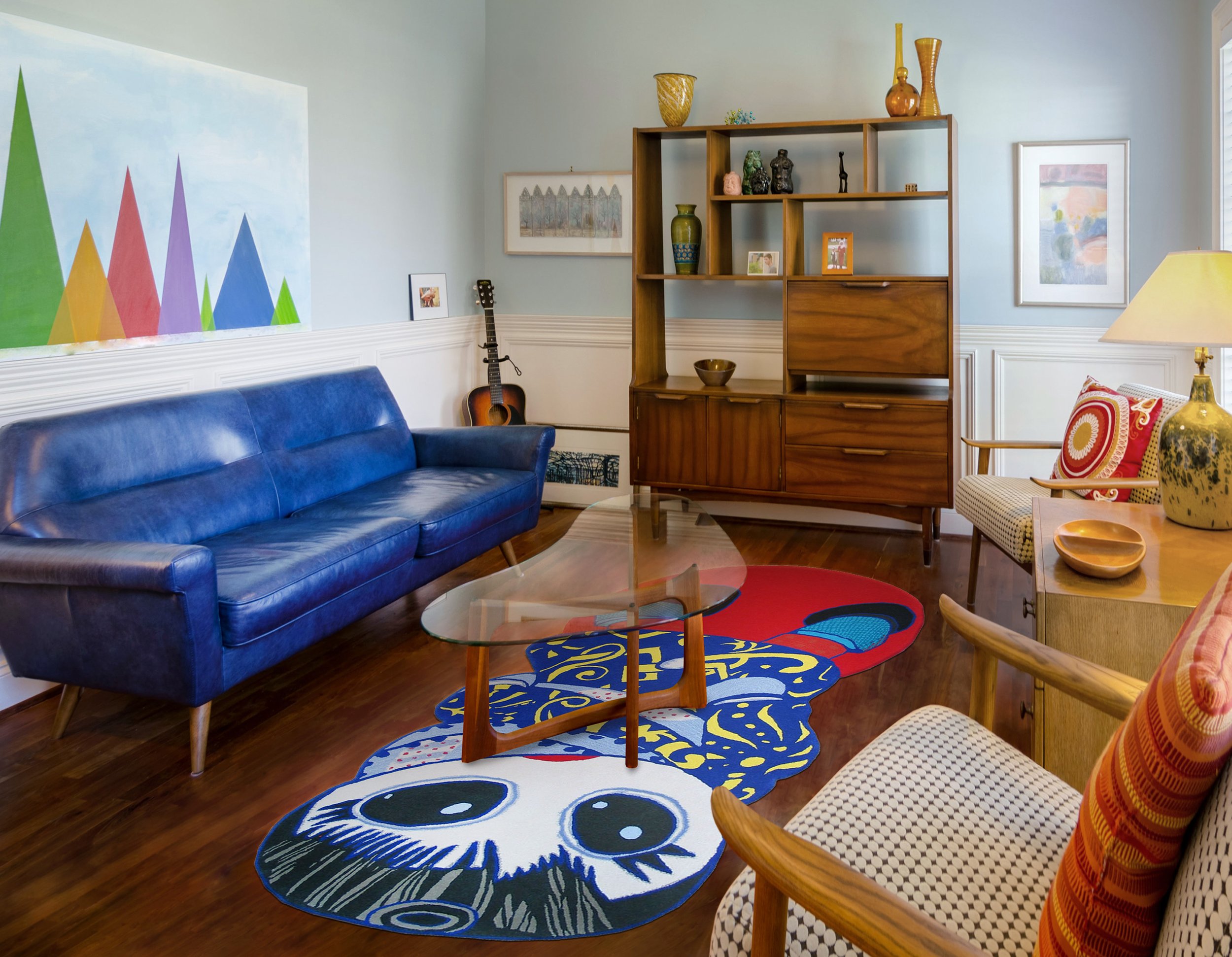From decorating a space to defining a zone, a rug is the ultimate style tool. It is an important building block for creating a cohesive space. It can anchor a room and easily infuse it with personality and taste. To create a balanced space, it is essential to consider all the aspects and elements of the room, and look for pieces that work well together.
When it comes to rugs, it’s important to ensure that the size of the rug is in proportion to the size of the room. A rug that is too small is often “swallowed” in a large room, while a rug that is too big will overcrowd the space and make the room appear smaller.
However, we can also make this work in our favour when decorating - if we want to put a small rug in a big space, the rug becomes more than just a floor cover, because in the context of the surrounding area, the rug is now an object to be observed and admired, just like a painting or a sculpture.
SHAPES
Square and circular shapes stand out as powerful elements and their impact dependent on size. Meanwhile, the flexibility of rectangular shapes allows for easy adaptation to different layouts. But, introducing irregular shapes adds a dynamic touch, opposing the strict geometry of rectangular spaces and allowing for more freedom in placement. In this context, size becomes less critical. A well-designed shaped rug can draw from or complement the overall design, contributing a creative flair to the space.
Round rugs are elegant and can soften a square or rectangle room with their curved edges.
They are a good choice in asymmetrical rooms, or rooms in which there are irregular walls - such as in older villas that have nooks and indented walls around windows, doors etc.
Round rugs are also great for creating reading corners, or other mini sanctuaries within your space.
Rectangular or square rugs are more traditional, but in large open spaces, they are essential for defining areas of use. For example, if you have an open-plan kitchen and family room, placing a rug under your sofa and ottoman, and under your dining table, will create a sense of three rooms within one.
Irregular shaped rugs are less common, but an option worth considering. They are sure to draw attention to the area, and can make a space feel relaxed in a way traditional rugs can’t.
They’re a great way to soften a space, add a dynamic element or a sense of playfulness. Opting for an irregular shape allows for more freedom when positioning furniture, too. They can also be used as an artwork in the space, creating a focal point on the floor. It's best to give shaped rugs as much breathing space as possible, allowing it to hold itself in a room. They are best utilised in foyers, hallways and even bathrooms.
Style tip: Placing a rug under an armchair will create the perfect reading nook. Pair it with a stylish lamp and a comfy pillow to tie it together.
COLOURS & PATTERNS
A rug is one of the easiest and quickest ways to inject a large expanse of colour into the home. There’s no time-consuming painting or decorating, just pop it on the floor for an instantly refreshed room. To approach that in the best possible way, consider first the atmosphere you want to create – richer-hued rugs, like burgundy, brown and taupe, can give your room a more intimate feel, while light rugs will make a room feel brighter and larger.
Next, consider the room's orientation to get the hue right – sunny rooms can take cooler colours, while light-starved rooms will benefit from warmer tones. A good tip is that a rug shouldn't match a wall colour, ideally, as this won't create a layered, dimensional result. You can of course pick out the wall colour in elements of the rug's design, or choose a lighter or darker tone of the wall colour for the rug.
If you have children and/or pets, or for high-traffic areas, opt for a patterned rug – they're much more forgiving! Lots of colour, thread with dimension, and repeating patterns won't show the dust and dirt as quickly. Patterned rugs also add texture and depth to a space and are relied upon time and time again for their ability to seamlessly tie a room together. If you’ve got statement chairs or art you already love, opt for a patterned rug that features a colour in common.
Remember, patterns don’t have to be bold and bright, a simple pattern in subdued colours can add a touch of elegance to a room. You can also use bordered designs to define and formalise a space.









